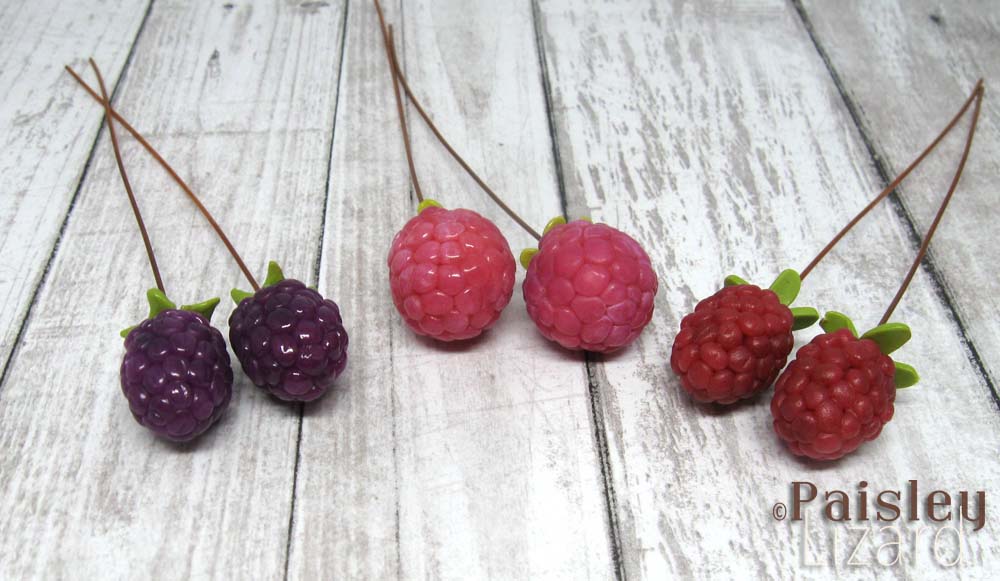
The theme for the first Art Elements design challenge of the new year was ‘berries.’ There are berries and then there are berries. By which, of course, I mean there are those things botanists classify as berries, and then there are the things we call berries but which are actually some other part of a plant. I was inspired by both kinds of berries for this challenge.
The first thing I made was a little fairy house jar in the shape of a strawberry. Despite their common english name, strawberries are not actually berries according to the botanical definition of: a fleshy fruit without a stone, produced from a single flower containing one ovary. Nope, strawberries are not remotely botanical berries. Botanists classify them as “accessory fruits,” which makes me giggle. Every time I say it. Or think it. Accessory fruit: the fruit you wear when you want to add a little somethin’-somethin’ to your outfit.

Strawberries, not being actual botanical berries, are what some refer to as a “culinary berry.” That term, culinary berry, is not nearly as amusing as accessory fruit. Unless, of course, you picture your strawberry in an itty bitty chef’s hat and jacket. And then …hilarious. But seriously, culinary berries are edible fruits that may or may not be botanical berries, including raspberries, blackberries, blueberries, and cranberries. Two of those culinary berries – blueberry and cranberry – are also botanical berries. Raspberries and blackberries are “aggregate fruit” composed of multiple “fruitlets.” Go ahead, giggle. Fruitlets. Those botanists slay me.
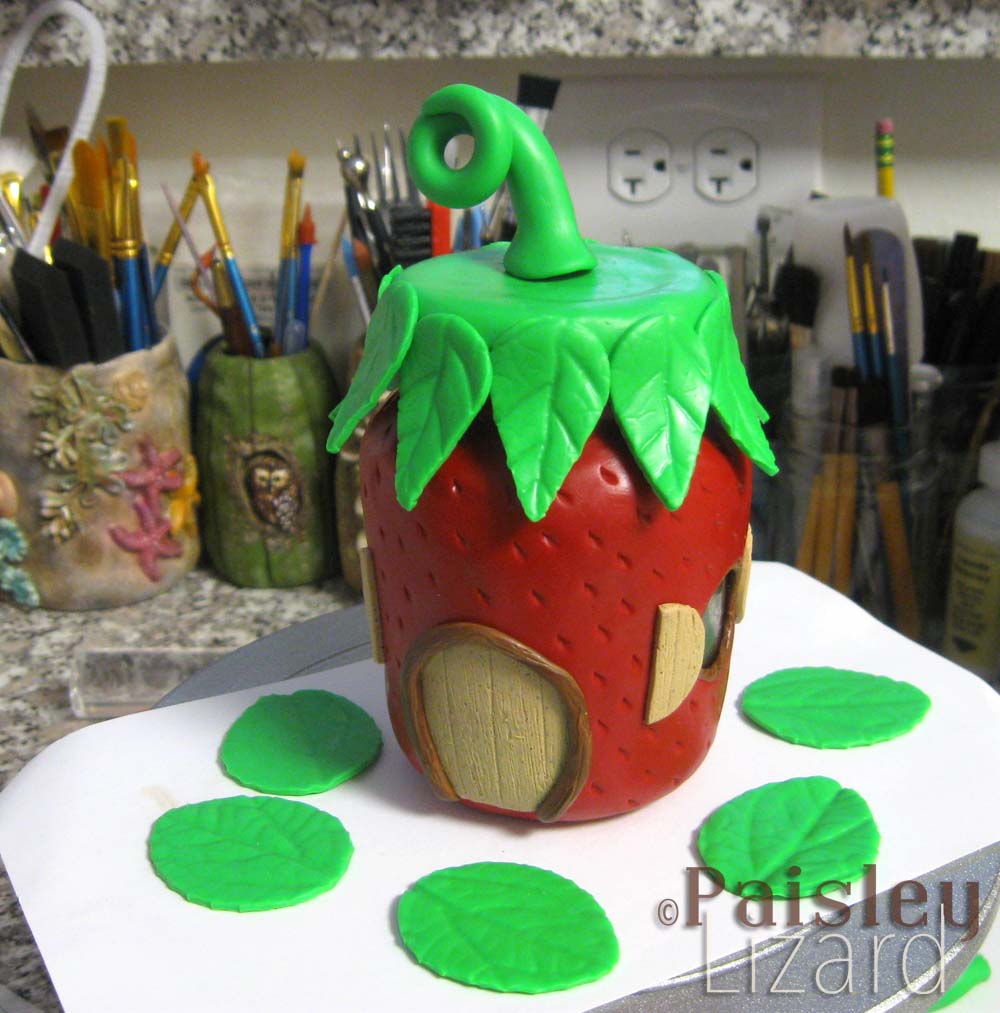
Anyway, back to my fairy house. Why did I choose to make it in the shape of a strawberry when I know full well that strawberries are not botanical berries? Because the glass jar looked like a strawberry. The jar originally contained dijon mustard and I kept it because it’s an oddly cute shape. And because I am pathologically incapable of getting rid of glass jars and bottles. I may or may not choose condiments and preserves based on the shape of the jar containing them.

To turn the mustard jar into a strawberry fairy house, I covered it with polymer clay. The lid is also decorated with polymer clay so that when it screws onto the jar, it forms the roof of the fairy house. The jar was initially a little top-heavy with all the clay on the lid, so I added a small base. The base of the house is a piece of cardboard covered in polymer clay. The landscaping isn’t very elaborate: just some patches of moss. Because the fairy homeowners association requires xeriscaping to promote responsible use of water.
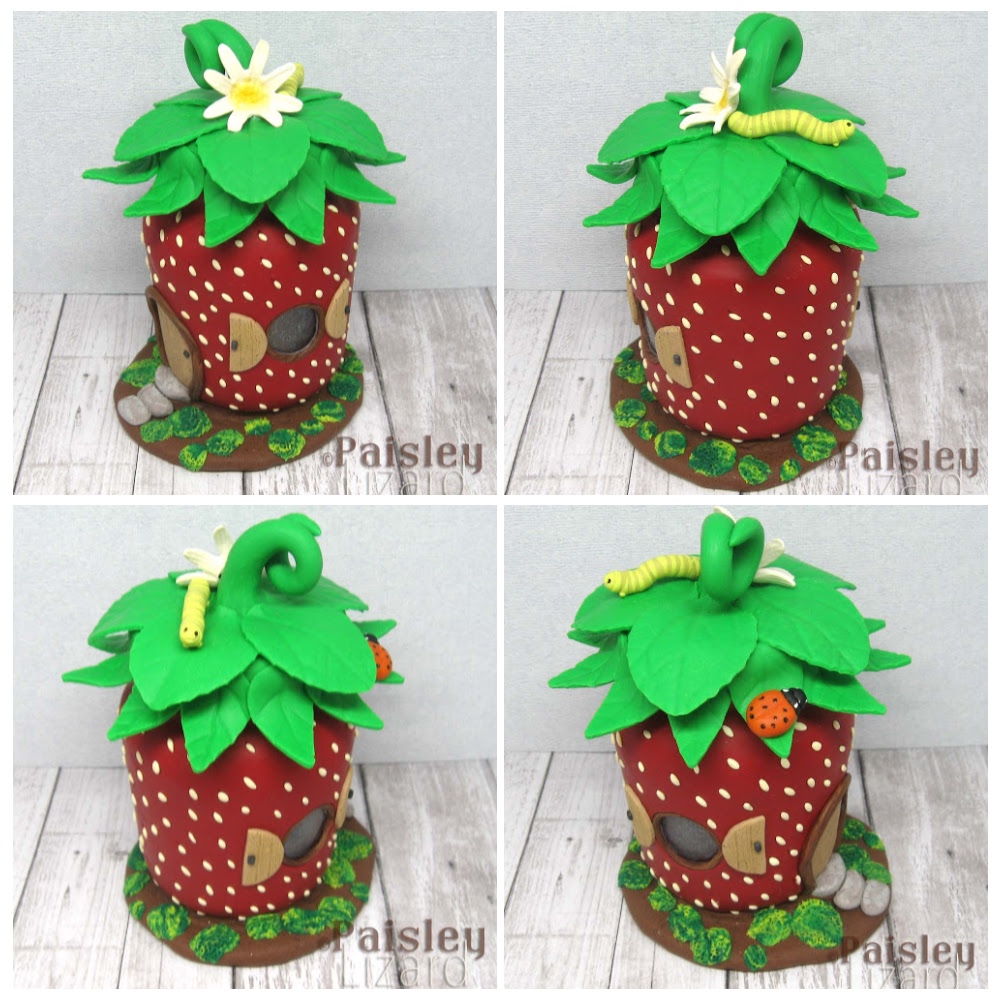
The windows are tinted translucent blue with iridescent glitter, aka fairy dust. When an LED light is placed in the jar, light sparkles from the windows and gives the strawberry an overall glow. On the roof are a ladybird beetle and an inchworm. And there are about a thousand individually placed seeds on the outside of the strawberry. Maybe it’s only a hundred. Or more like several dozen. Whatever. There are a lot, and they took forever to make, and they kept falling off while I was working, so I think I attached each one about a dozen times. So there may as well have been a thousand. And I hate each and every one of them.
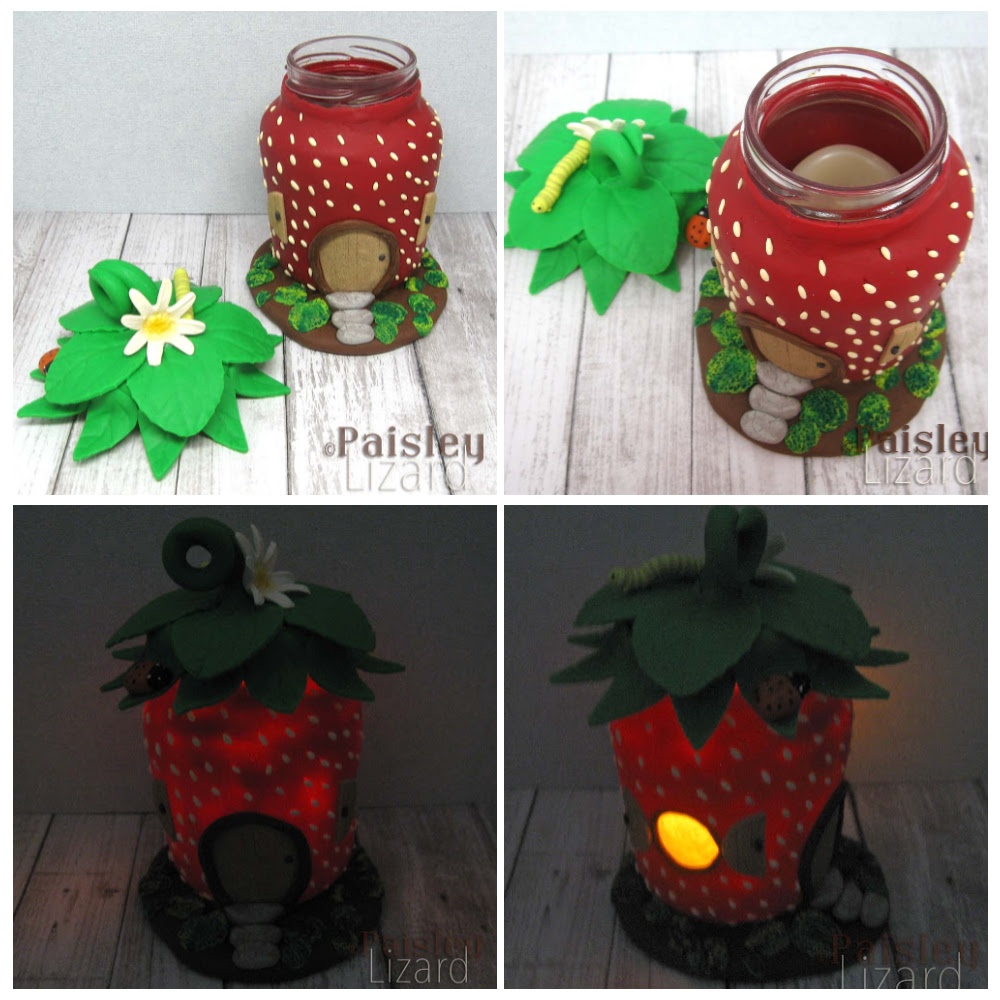
The next piece I completed for this challenge was a little embroidery hoop ornament featuring juniper berries. The design was one I didn’t get around to in time for christmas last month. So, that’s one handmade gift done for next year. Yay me! Also, I know what you’re thinking: juniper berries are not botanical berries, they’re female seed cones. We’re really playing fast and loose with the whole “berry” thing today, aren’t we? Wheeeeeeee!
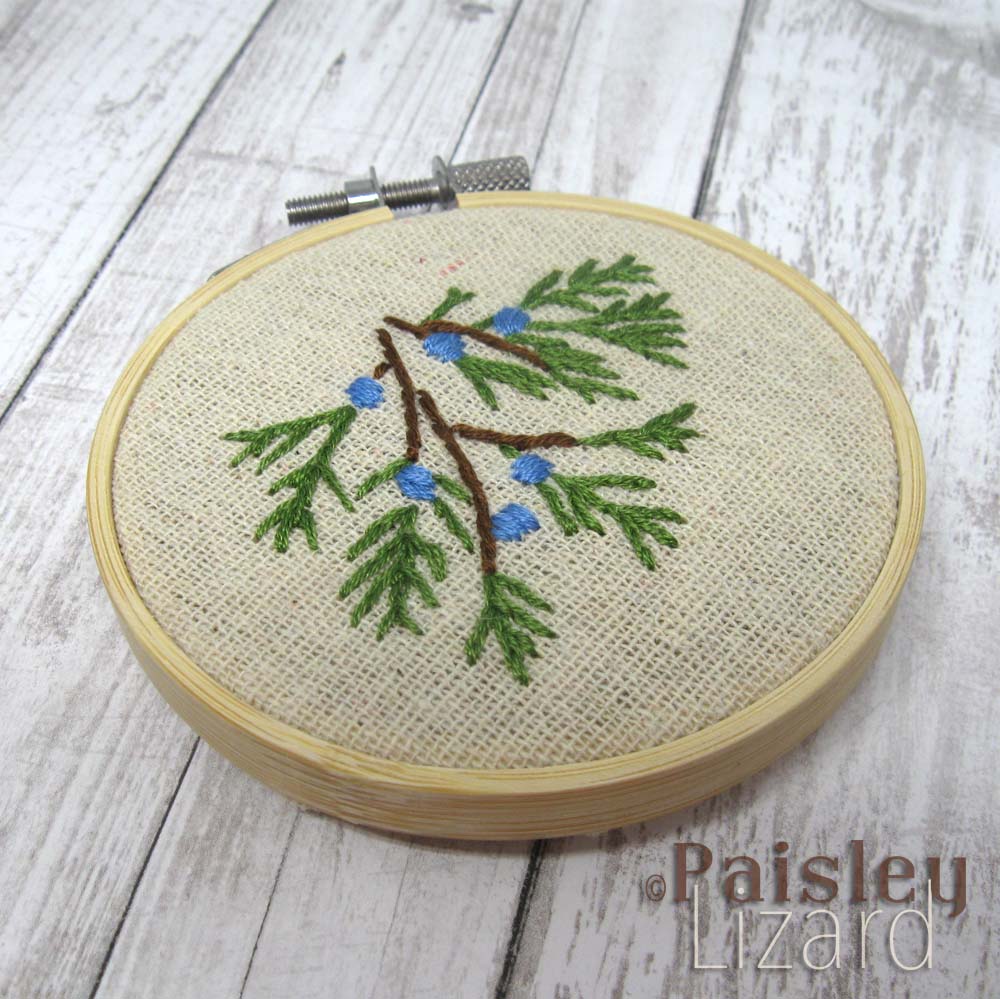
Okay, next up were more strawberries. What is up with me and the strawberries? Idk, but “a girl can never have too many accessory fruits,” is what I always say. Right before I snort-laugh. And then I had to stop laughing because making strawberry beaded headpins is serious stuff. Or rather, it’s seriously tedious. For the first strawberry headpin, which is about the size of a small grape (which is, btw, a botanical berry!), I made a dozen teensy weensy “seeds” to place into the little indentations. Because, apparently, I didn’t learn my lesson with the giant strawberry fairy house. Btw, did you know the things we call seeds on the thing that isn’t a berry aren’t actually seeds? They are each a separate fruit with a seed inside and are called achenes. Look, I don’t make the rules here. Take it up with the botanists.
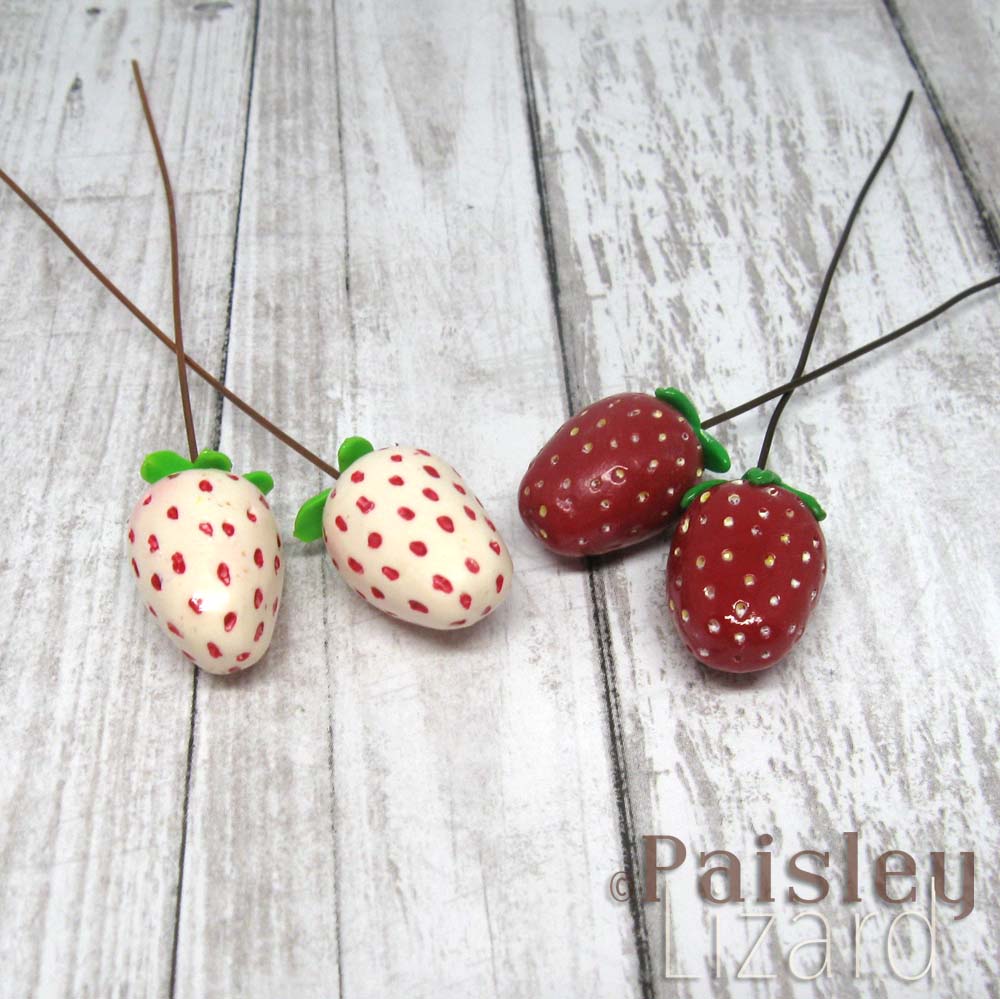
I finished two pineberry headpins with polymer clay “seeds.” When I realized each headpin required five or six dozen teensy weensy practically microscopic seed things to fill the indentations, I decided the rest of my strawberry headpins didn’t need quite that level of realism. Little bitty indentations all over would be sufficient to imply the presence of the seeds-that-are-not-seeds. And then, I decided to dip some of my strawberries in “chocolate,” covering at least half of the indentations anyway. Of course, I couldn’t leave the indentations empty, so I tediously painted them using a cocktail stick to place dabs of acrylic paint in them.

Eventually, I decided I needed to make something inspired by a botanical berry. And I just happened to have a pumpkin-shaped jar perfectly-suited for the occasion. What? Pumpkins are technically berries. As are bananas, peppers, tomatoes, avocados, squash, and eggplants. Don’t give me that look. What did I say about who made the berry-rules?
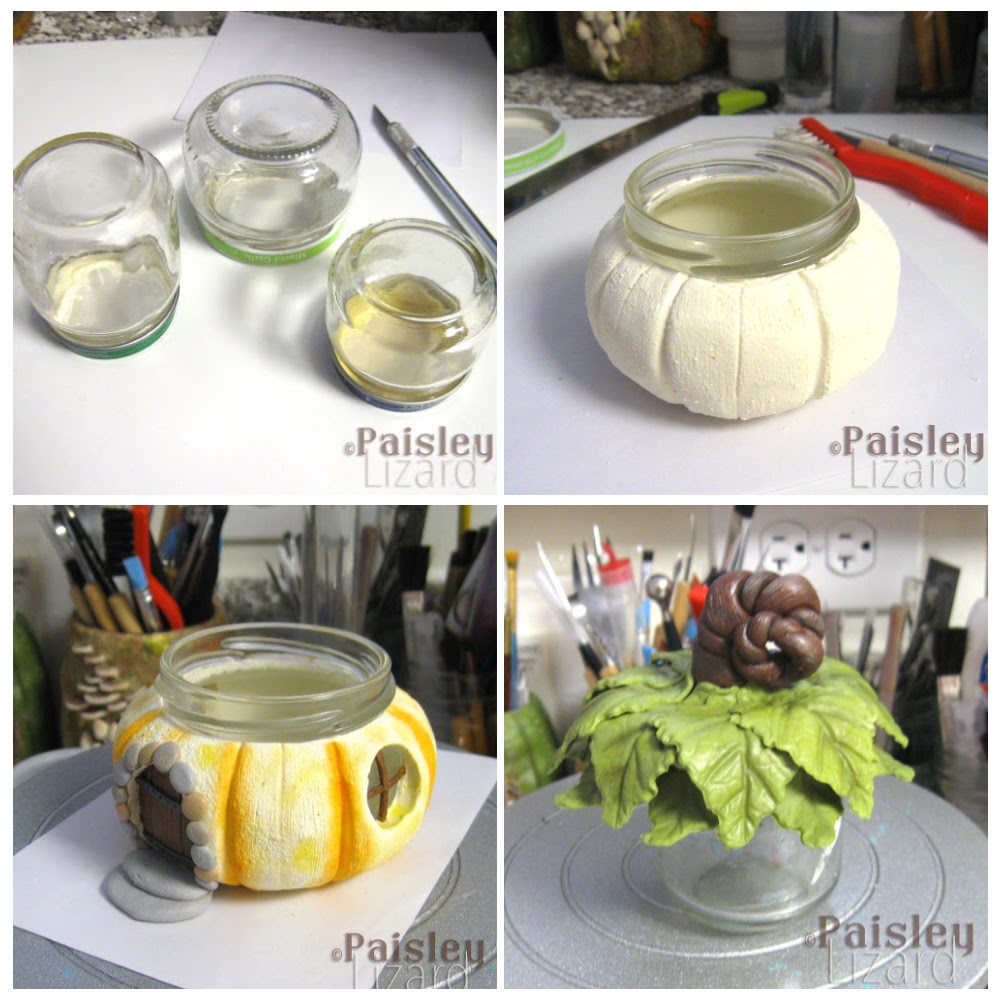
Turning the empty jar (which previously contained minced garlic) into a pumpkin fairy house proceeded much like converting the mustard jar into a strawberry fairy house. Minus the hateful seeds-not-seeds. The base of the jar was covered in clay sculpted and painted to resemble a tiger pumpkin. The lid was covered with polymer clay shaped as leaves and a stem to form the roof.
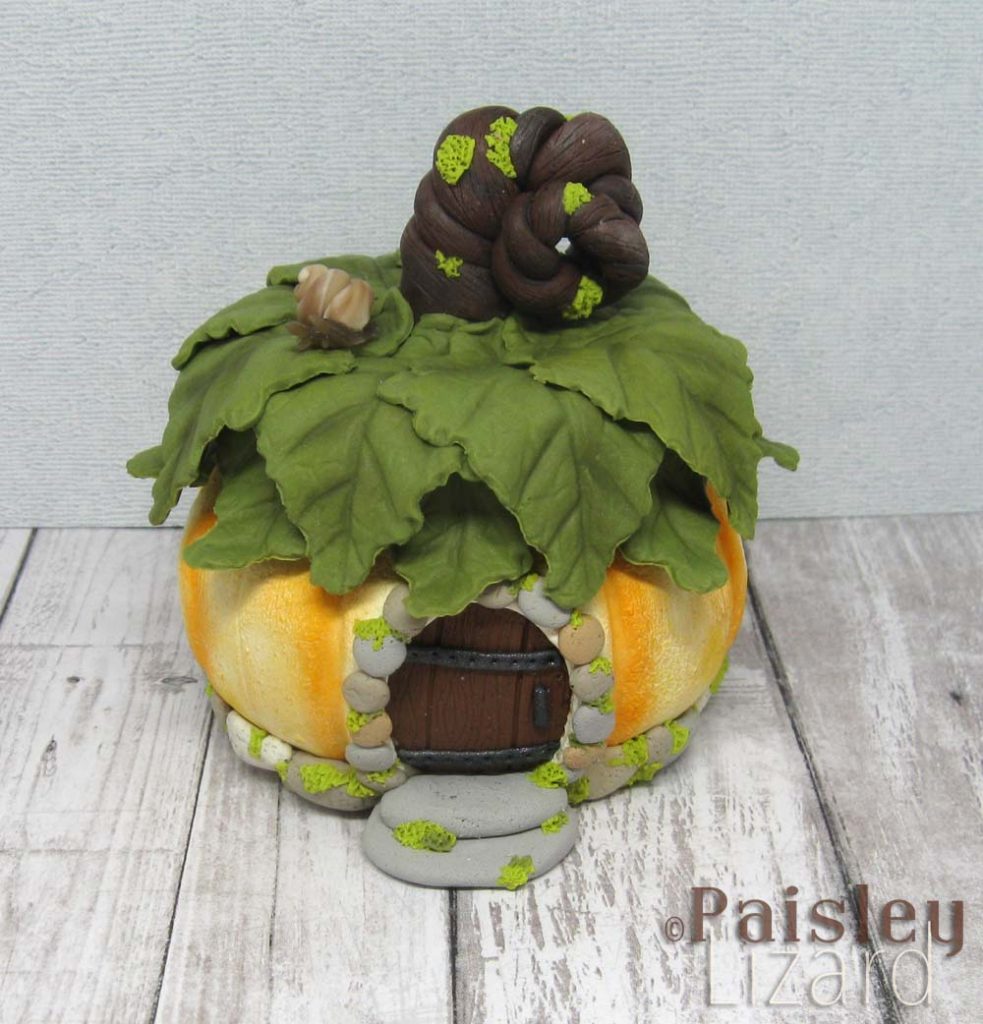
I am aware that pumpkins don’t have a full cover of leaves where the stem joins the fruit. They aren’t pumpkin leaves. The fairy who own the pumpkin selected the oak leaf roof option. Also, the pumpkin fairy are part of the same HOA as the strawberry fairy, which explains their use of local pebbles as minimalist landscaping.
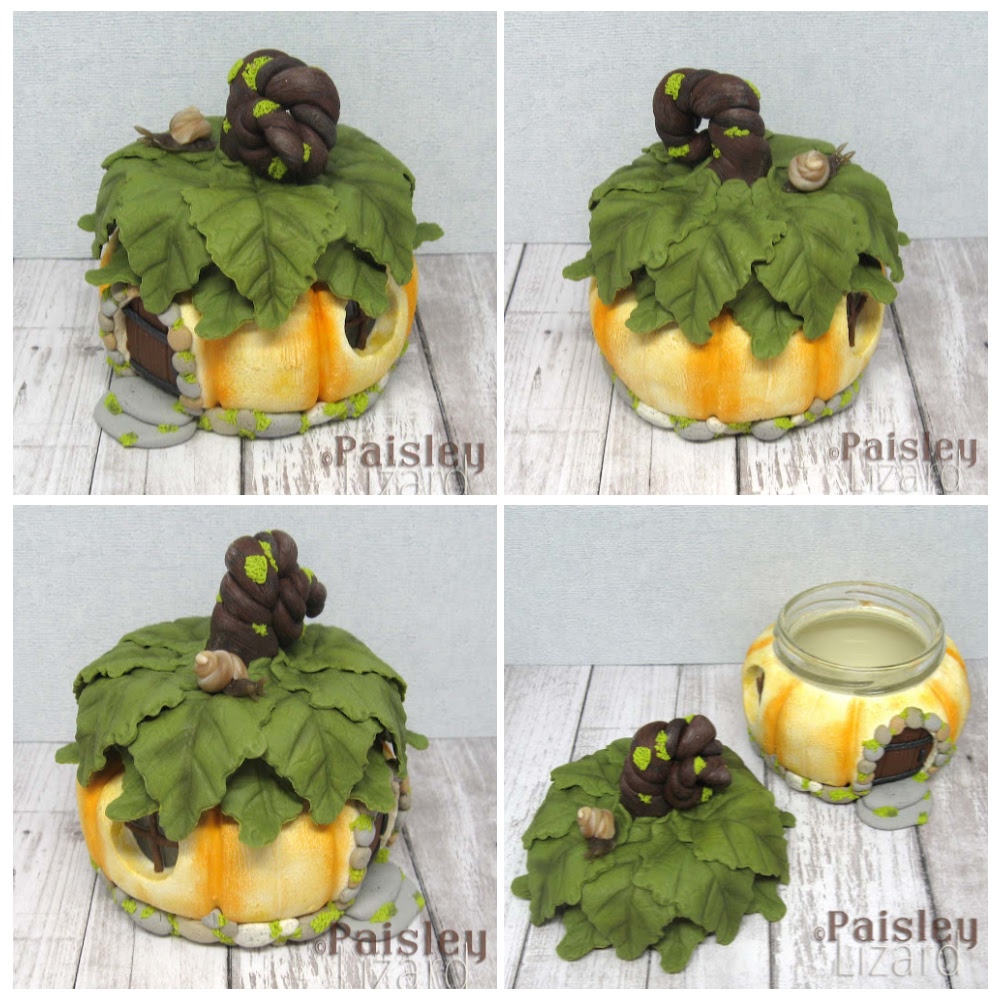
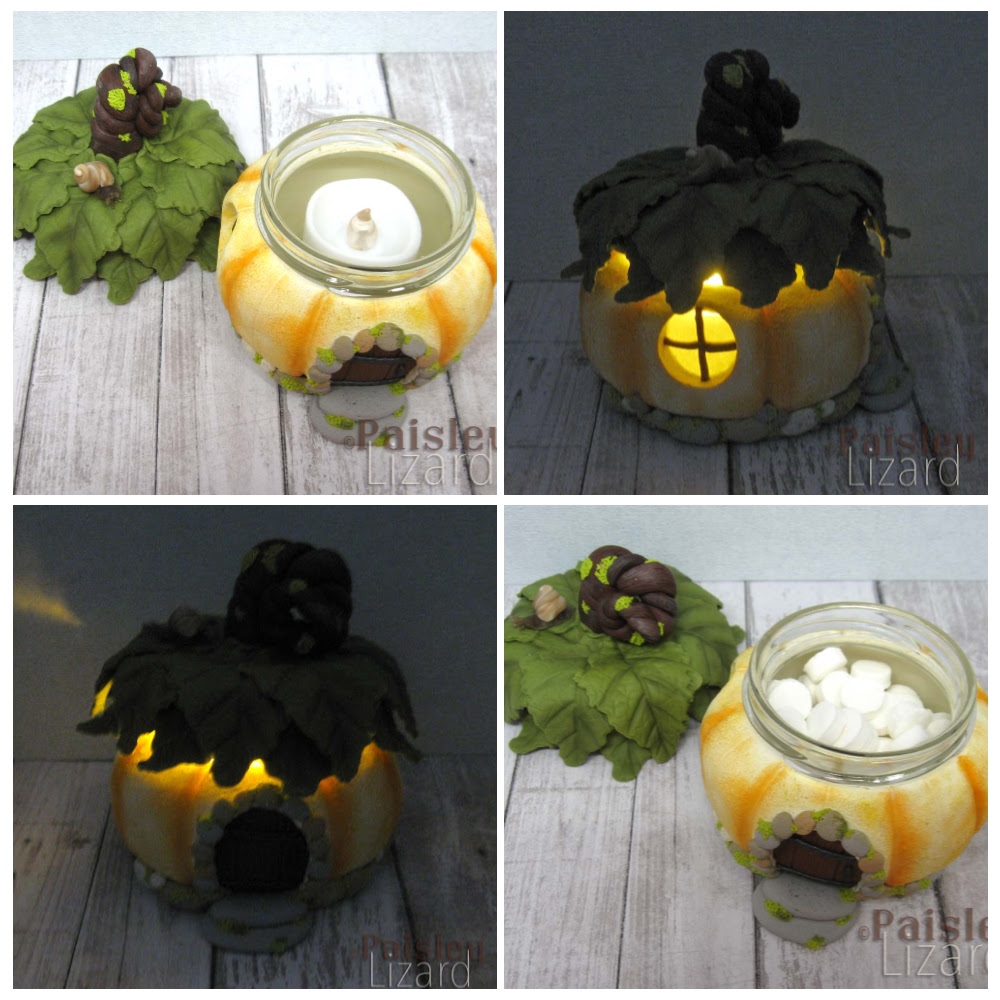
My favorite culinary berries are raspberries. Therefore, I had to make some raspberry headpins before I ran out of month for this challenge. Very realistic-looking raspberries can be made from tinted translucent polymer clay. Just not by me. My headpins are raspberry-esque with an opaque glass effect. I didn’t make as many raspberry headpins as I planned because sculpting an aggregate fruit one fruitlet at a time takes forever. Seriously, I don’t know how Nature does it.
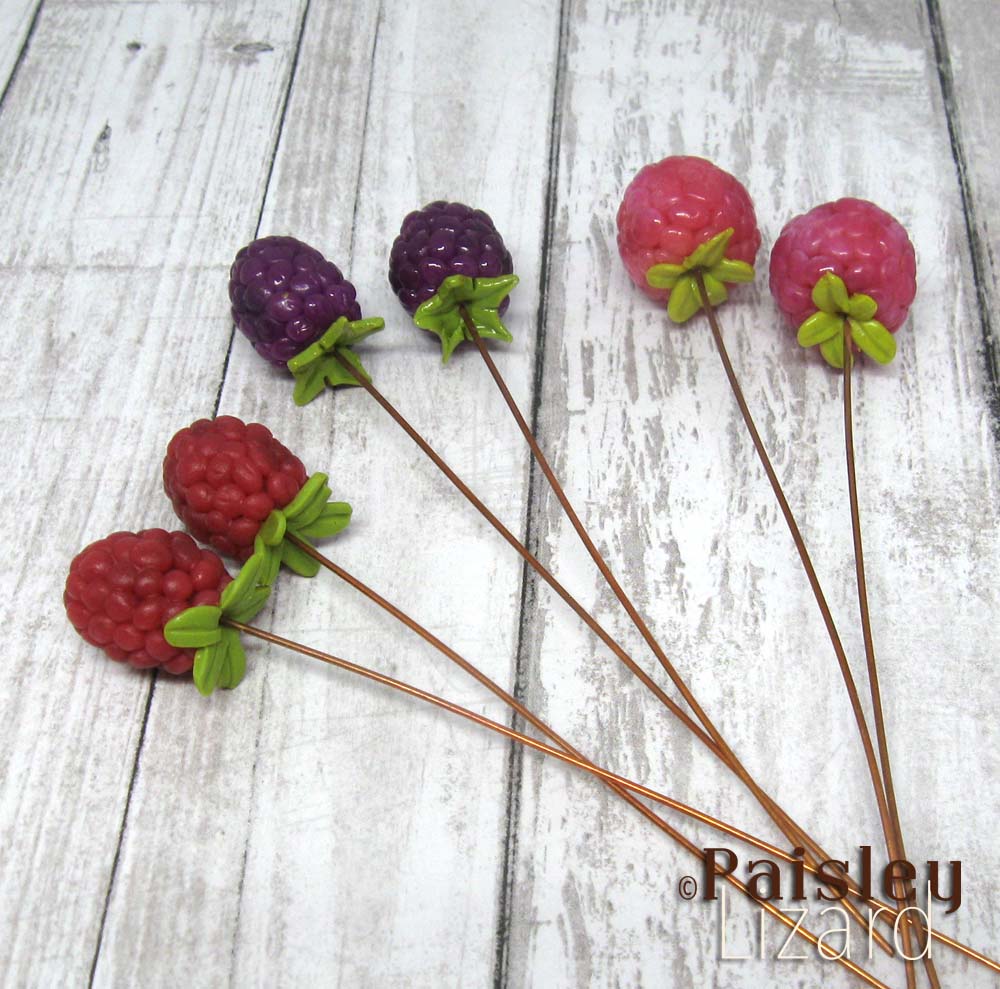
Those are all the berries I’ve got for you today. If you would like to make one or more of them your own, most are available in my shop on etsy. But wait, that’s not all you get. Because this design challenge is also a blog hop. If you visit the other participating artists you will be treated to all manner of berries in a wide assortment of media and techniques.

Art Elements Team: Laney Karen Cathy Lesley Jen
Guest Contributors: Sarah Raines Karin Grosset Grange Divya Bay Moon Design Tammy Adams (<–You are here!)

Tammy, these are all so cute and thanks for edumacating those of use who’ve never given a second thought to what constitutes a botanical berry (or not). Kind of like ‘geraniums’ and ‘pelargoniums’ ….
Anyway, the chocolate covered ones look good enough to eat! The little worm addition to your ‘Dijon’ faery house (the city is about 2 hours away to the south of me here in France) makes me smile. I love your fun sense of humor.
And the little snail too 🙂 .. But I must confess (and am only doing so because I tnink you’d want to know) that the stem on your second fairy house makes me think of other organic matter, perhaps the color?
Bahahaha. I must confess, I thought the same thing about that stem. But not until *after* the clay was cured and I was trying to get a close-up of the snail that didn’t look like it was in front of a pile of poo. And then as I was mixing the “chocolate” sauce for the strawberries, well, it went through a poo stage. So this post was almost titled something about berry poop. 😀 Art is fun!
I never knew that about strawberries so thank you for that fun fact. I LOVE THAT STRAWBERRY FAIRY HOUSE.. that is awesome!! You have been so busy and inspired with this month’s challenge, so many fabulous pieces but the strawberry fairy house is my favourite 😀
Thanks so much, Laney. I didn’t know that about strawberries until I did some research for a strawberry-themed earring design challenge a couple years ago. And then it was one of those random facts that stuck with me. Because it’s just funny.
I love how you embraceD the full gamut of berries…the little pumpkin is adorable and some of those headpins really look like the real thing!
Thanks so much, Lesley. There are some very talented polymer clay artists who make exceptionally realistic miniature food and I now have a much greater appreciation for the patience they must have.
Absolutely delightful post! Your descriptions express the mischievous nature of the fairies so well! And your botanical explanations made me laugh. Wonderful creations, all!
Thanks so much, Karen. For some reason, this theme made me feel especially whimsical, if not down right silly.
Wow! You were busy last month. I am totally in love with the fairy berry house! The windows glowing with the candle inside is just too cute. I also love that you have educated those of us that didn’t have a clue about strawberries not being true berries. Thank you! All your berry headpins are so lovely and look ready to eat especially those covered in chocolate;-) And your pumpkin house is so adorable. And another education in pumpkins being berries. Who knew? Thanks for the info and the fun filled post.
Thanks so much, Cathy. I had to share that berry trivia because it just strikes me as so hilarious. Botanists really must be a hoot to hang with.
Your work and humorous post were a great topping for this berry journey. Your fairy houses are delightful and fun!
Thanks so much, Patricia.
Delightful pieces and another hilarious post, I must say. Fruitlet, HOA rules, I don’t know how you think of these things. I seriously didn’t know that pumpkins are berries while strawberry is not. If is not a berry, then why is it called a berry? I question for Google surely! But I do have one (silly and totally amateur) question for you. How does the clay on the jars and lids cure? How do you bake glass and tin?
Thanks so much, Divya. I’m also curious how strawberries got their name. I cannot take credit for fruitlets; that one is all the botanists.
As for curing the clay on the jar and metal lids: almost anything that can withstand the cure temp of the clay can go into the oven covered with raw clay. Jars and lids used in canning usually fit that requirement. Otherwise, it’s a matter of making sure there are no air bubbles trapped between the raw clay and the glass/metal or else the clay will bulge outward or crack during cure. (I’ve had that happen) In addition to smoothing the clay carefully, I poke little holes all over and smooth again to try to ensure no trapped air.
Thanks for the information 🙂
I laughed. I cried (not really). And I learned a lot about berries and the botanists who make weird hard to follow rules. Who knew I would get all this bonus content in addition to the eye candy? You are amazing. That is all.
Thanks so much, Jen. As I recall, botany was the hardest part of the biology GRE (or at least, the part I scored worst on) and the part of general biology that made the least sense to me.
I have been looking forward to this reveal. One of the main reasons is I wanted to see your berry beads. I know you would have lots of wonderful looking berries. Unfortunately, you had an accident and only have three but they are beauties. I love the pumpkin. Very cute!
Thanks so much, Kathy. I was not the one who had the accident – that was Karen.
It’s so hard to pick a favorite! I’m torn between the strawberry and the pumpkin house <3
You were so busy once again, I think I'll have to come back again to take a second look when I'm not as tired!
P.S. In German the strawberry is a "Sammelnussfrucht" (or "Sammenachänenfrucht") which you could translate as "Nut collector fruit" because the achenes resemble tiny nuts. You are welcome 😉
Doh … “Sammelachänenfrucht” of course. Noticed my typo after hitting “post”.
Thanks so much, Cat. And thanks for the word in German. I love those compound words. 🙂
I love what you made and loved reading about it! Really cheered me up. Thank you! 🙏❤️
Thanks so much, Karen. I didn’t think I would have so many ideas for this theme and really enjoyed playing with it.
Oh I had so much fun reading your post, your inspiration is infinite and your creations so fun, poetic, charming and beautiful! I love everything!
Thanks so much, Karin. I’m glad you enjoyed the post.
Oh my what a wonderful post, I giggled through most of it! I can’t believe how many pieces you managed to create and they are all wonderful! I adore the fairy houses but if I had to pick a favourite it would have to be the raspberries, I just love the opaque glass effect you managed to achieve!!!
Thanks so much, Niky. I am pleased with the effect on the raspberries. Sometimes, an experiment actually goes according to plan. 🙂
That was the funniest post I’ve read in a long time. I don’t often find my sense of humor and approach to making/creating reflected on line. I love your detailed description of both your process and the technical definitions. Thank you for brightening my morning on a dreary winter morning!
You did SO MUCH research on berries. I wouldn’t have even considered delving that far into the challenge, but you getting tickled over the botanists cracked me up for sure. I adore both of your fair houses and had to laugh at your trouble with the strawberry “seeds” on that one. Sorry! And while you made a ton of strawberries, it’s the raspberries that catch my eye – they’re my favorite!
Thanks so much, Hope. This theme made me more whimsical and silly than usual and it was entirely the botanists’ fault.